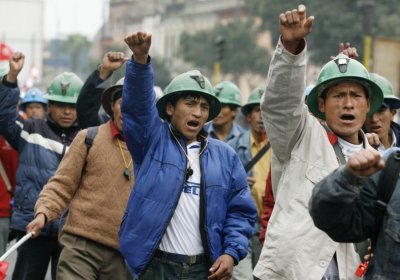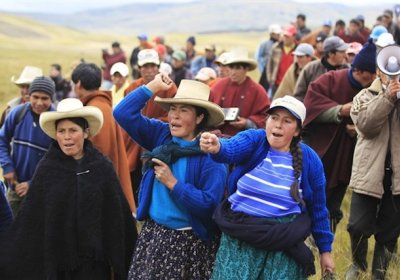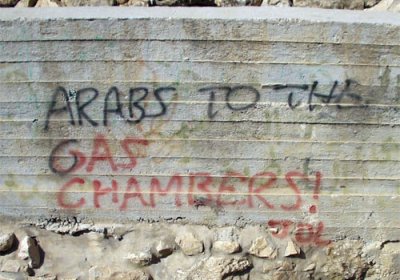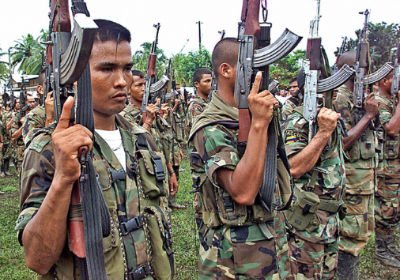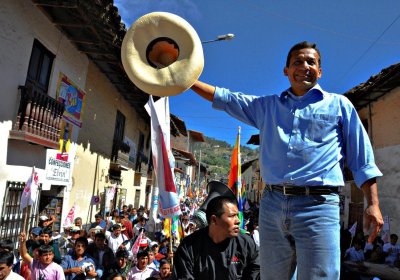After a hostage crisis in which one of armed group Shining Path's (Sendero Luminoso – SL) factions abducted gas workers employed by a major multinational, a counter-insurgency operation was launched in the Apurimac-Ene River Valley (VRAE).
The stand-off was reported by the international media. But what has been largely ignored are the human rights abuses against VRAE civilian communities are being committed by the Peruvian military.
David T. Rowlands
At the insistence of the United States and Canada, Cuba was excluded from the Sixth Summit of the Americas, an intergovernmental conference held in Cartagena, Colombia, over April 14-15.
As a result of opposition from many Latin American nations over Cuba's exclusion, as well as Argentina's claim to sovereignty over the Malvinas (Falklands) islands, the summit ended with no final declaration signed.
The summit, involving all nations in the Americas except Cuba, is ostensibly designed to facilitate dialogue, understanding and cooperation between nations of the region.
Tintaya is an open-cut copper and gold mine 4000 metres high in the district of Yauri, Espinar province, southern Peru. It is a spectacle of modern industrial devastation that contrasts jarringly with the timeless beauty of the surrounding altiplano landscape.
Finally, after years of aggravated environmental abuse, the mine's owner, Swiss-based Xstrata, will be investigated by Peruvian authorities.
After the discovery of large deposits, a copper mine was established at Tintaya in the mid-1980s. Extractive operations were hugely expanded when BHP bought the site in 1996.
A United Nations Security Council (UNSC) motion condemning the Syrian regime's bloodshed and caling for a “transition to democracy” was vetoed on February 4 by Russia and China.
United States officials condemned the move as “disgusting and shameful” and a “travesty”.
The moral outrage expressed by the US was faithfully reported by the corporate Western media, which paid little attention to Washington’s own voting record in the UNSC.
Cajamarca, a town with tragic associations in Peruvian history, is the setting of another devastating imperialist onslaught.
In 1532, a band of Spanish conquistadores ambushed the Inca king Atahualpa in the central plaza of this Andean town.
The brutal spirit of conquista is alive and well in contemporary Cajamarca, in the form of the US-based Newmont mining corporation, an outfit with a slick PR machine and a very dirty environmental and human rights track record.
One of the most chilling scenes in the recent SBS mini-series The Promise depicts the plight of some Palestinian schoolgirls in Hebron.
Leaving school in the afternoon, the girls are subjected to abuse and intimidation by settler youths as they walk home. At one point, a settler boy, face contorted with hatred, viciously hurls stones at the group, injuring one.
Meanwhile, as the girls crouch in terror, blase Israeli Defense Force (IDF) soldiers look on, doing nothing to stop the violence until challenged by a young foreign tourist.
United States Undersecretary of State James Steinberg, speaking in Bogota on October 26, claimed the future relationship between Washington and its most favoured client in Latin America, Colombia, would be based on “reciprocity and mutual respect”.
The stated purpose of Steinberg’s visit was to “re-launch the agenda” of US-Colombian relations” by initiating a “High-Level Partnership Dialogue”.
It’s another statistic showing up the criminal absurdity of Plan Colombia and Washington’s “war on drugs.”
Last year, according to recent United States Drug Enforcement Administration sources, Peru produced about 325 metric tonnes of pure cocaine, surpassing Colombia’s output of 275 tonnes.
For the first time since the early 1990s, Peru has emerged as the world’s leading cocaine producer. Bolivian production is also reportedly up.
In its traditional, folk medicinal form, coca is a blessing that dispels ailments such as indigestion and altitude sickness with remarkable efficacy.
In the aftermath of Ollanta Humala’s June 5 victory in the Peruvian presidential election, the “investment community” and the international business press reacted with the hysteria of thieves who think they have heard a distant siren approaching.
Their first impulse was to cut and run. Peruvian stocks plunged amid fears that this “radical leftist” would put an end to the “good times”, levelling higher taxes on mining profits and perhaps nationalising key export industries.
At the Second Meeting of American Organisations and Movements in Tihuanacu, Bolivia, in 1983, September 5 was officially designated International Indigenous Women’s Day.
Since then, September 5 has been growing in recognition as a major event in Latin America's progressive calendar.
The date was chosen in honour of Bartolina Sisa, an Aymara resistance leader who was brutally executed by royalist forces in La Paz, now the capital of Bolivia, on September 5, 1782.
There used to be snow
On the mountain tops
Now the rivers run low
Nothing left for the crops
Where will they go
They who work the land
When all the ancestral waters
Have vanished in the sand?
Free market policies
And vanishing border lines
Replacing highland pastures
With open cut mines
No choice but to leave
A thousand years behind
City lights on the horizon
What will they find?
Billboards by the highway
Paper-thin lies
Selling progress and consumerism
As the land about them dies
Welcome to decaying sewers
And chemical smokestack plumes
Fifty years have passed since Congolese leader Patrice Lumumba fell victim to a US-Belgian murder plot.
The killing of the Congo's first post-independence leader set the newly-independent central African country (now known as the Democratic Republic of the Congo) on a tragic course that has led to the horrors of today.
The involvement of Western imperialist interests in this resource-rich region has been disastrous for its inhabitants from the outset.
Under Belgian rule, which officially ended in 1960, the Congo became a byword for crimes against humanity.
- Previous page
- Page 4
- Next page


